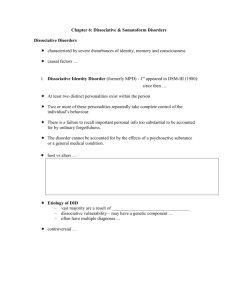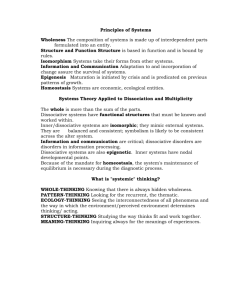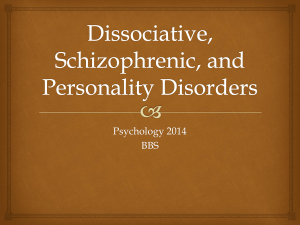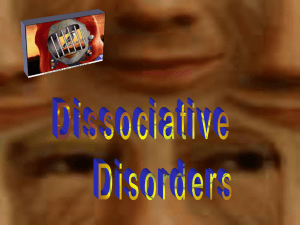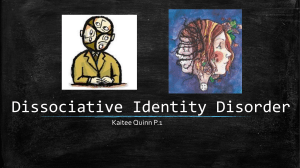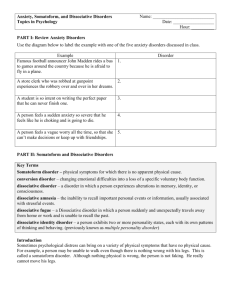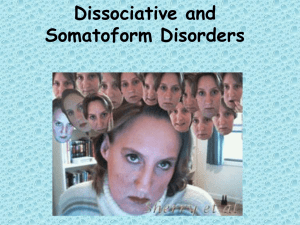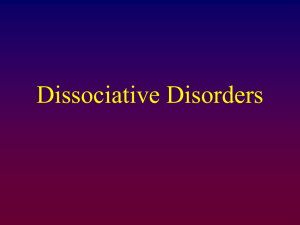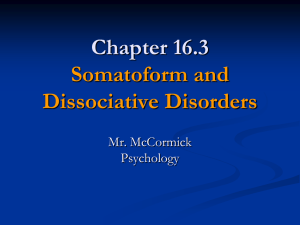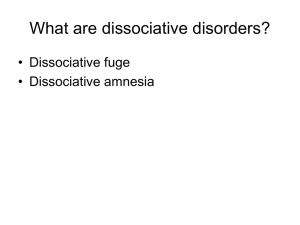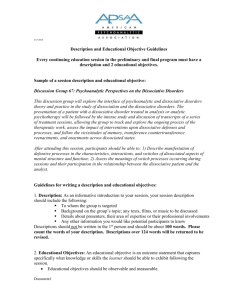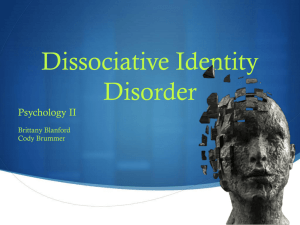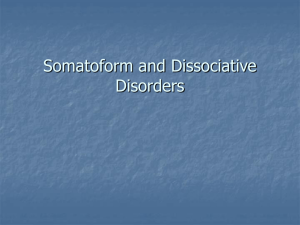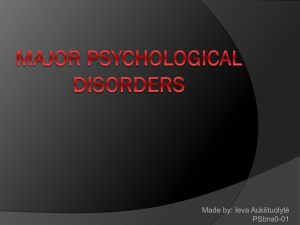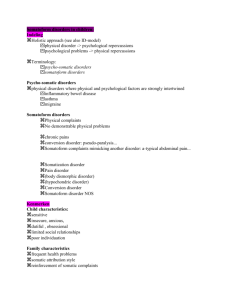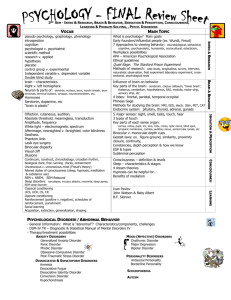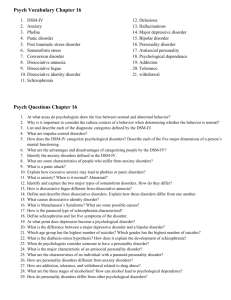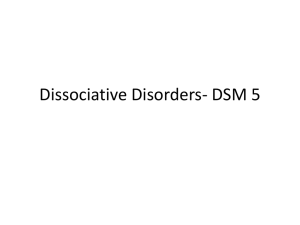Somatoform and Dissociative Disorders
advertisement
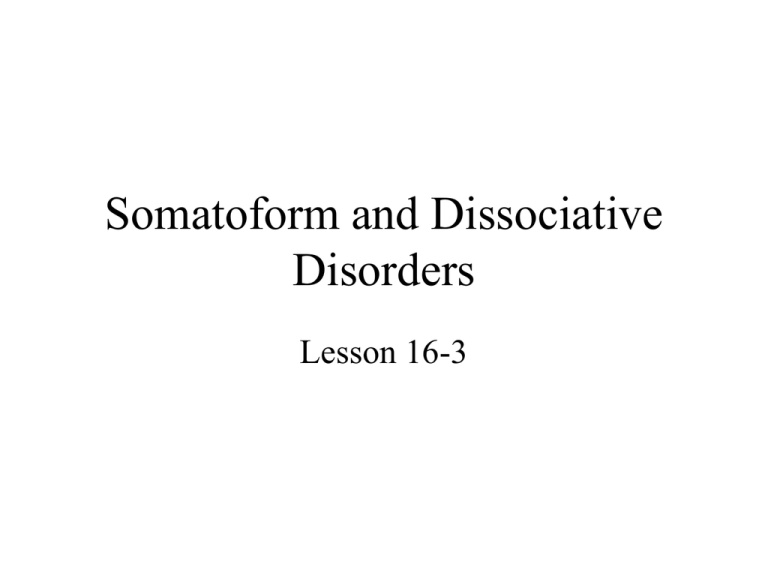
Somatoform and Dissociative Disorders Lesson 16-3 Bell Ringer • Read excerpt on p. 460 Somatoform Disorders • Characterized by physical symptoms brought on by psychological stress – Physical symptoms for which there is no apparent cause – Also called hysteria – Used by Sigmund Freud for unexplainable fainting, paralysis, or deafness Somatoform Disorders • Two types of somatoform disorders – Conversion disorder – Hypochondriasis Conversion Disorder • Conversion disorder is changing emotional difficulties into a loss of specific body function – No actual physical damage is present – They usually accept the loss with relative calm – They invent physical symptoms to gain freedom from an unbearable conflict Hypochondiasis • Person spends time looking for signs of serious illness • Even after evaluations, they continue to believe a disease exists – Mainly in young adulthood – Affects both males and females Dissociative Disorders • A disorder in which a person experiences alterations in memory, identity, or consciousness – Very rare • Dissociative amnesia – The inability to recall important personal events or information; is usually associated with stressful events – Not from normal forgetting, brain injuries, or traumatic event Dissociative Disorders • Dissociative Fugue – Amnesia where a person suddenly and unexpectedly travels away from home or work • Fugue state may last for days or weeks • Usually to escape unbearable conflict or anxiety • Will have no memory of it when they come out of it Dissociative Disorders • Dissociative Identity Disorder – Previously known as multiple personality disorder – Person exhibits two or more personality states, each with its own patterns of thinking and behaving. – Some believe it is an individual’s effort to escape a part of themselves that they fear – Extremely rare
